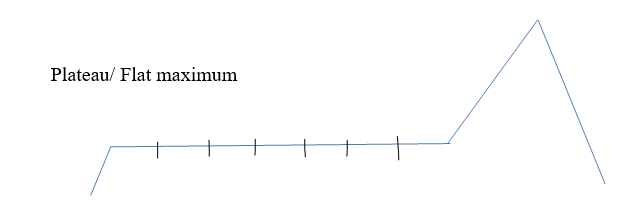Hill Climbing Algorithm
•
Hill Climbing is a technique to solve certain optimization problems.
•
In these techniques, we start
with a sub-optimal solution, which is improved repeatedly until some
condition is maximized.
•
The idea of starting with a
sub-optimal solution is compared to walking up the hill, and finally maximizing
some condition is compared to reaching the top of the hill.
Algorithm:
1) Evaluate the initial state. If it is goal state
then return and quit.
2) Loop until a solution is found or there are no
new operators left.
3) Select & apply a new operator.
4) Evaluate new state
If it is better than the current state then make it a new current state.
If it is not better than the current then go to step 2.
It is so-called because of the way the nodes are selected for
expansion. At each point search path, the successor node that appears to lead most
quickly to the top of the hill is selected for exploration. It terminates when
it reaches a “peak” where no neighbor has a higher value. This algorithm
doesn’t maintain a search tree so the data structure for the current node need
only record the state and the value of the objective function. The Hill Climbing
Algorithm is sometimes called as a greedy local search because it grabs a good
neighbor state without thinking ahead about where to go next. Unfortunately,
hill climbing suffers from the following problems:
·
Local maxima:
A local maximum is a state which is better than its neighbor states,
but there is also another state which is higher than it. They are also called foot-hills. It is shown in Fig. 1.2
A solution to this problem:
The backtracking technique can be a solution of the local maximum in-state space landscape. Create a list of the promising paths so that the
algorithm can backtrack the search space and explore other paths.
·
Plateau:
A solution to this problem:
The solution for the plateau is to take big steps or very little
steps while searching, to solve the problem. Randomly select a state that is
far away from the current state so it is possible that the algorithm could find a non-plateau region.
Another solution is to apply small steps several times in the same
direction.
·
Ridge:
It’s an area which is higher than surrounding states but it cannot be reached in a single move. It is an area of the search space that is higher than the surrounding areas and that itself has a slope. Ridge is shown in Fig. 1.4
A solution to this problem:
Trying different paths at the same time is a solution. With the use
of bidirectional search, or by moving in different directions, we can improve
this problem.
Advantages of Hill Climbing:
It can be used in continuous as well as discrete domains.
Hill climbing typically requires minimal memory, making it suitable for resource-constrained environments.
Hill climbing is easy to understand and implement.
Hill climbing can be adapted to different problem domains by modifying the objective function and search space representation.
Disadvantages of Hill Climbing:
Hill climbing tends to get stuck in local optima, which are solutions that are better than their immediate neighbors but not necessarily the global optimum.
It is not suitable for those problems whose value of the heuristic
function drops off suddenly when a solution may be in sight.
It is a local method as it looks at the immediate solution and decides
about the next step to be taken rather than exploring all consequences before
taking a move.
The quality of the solution found by hill climbing heavily depends on the initial solution or starting point. If the initial state is far from the global optimum, the algorithm may not reach the best solution.





No comments:
New comments are not allowed.